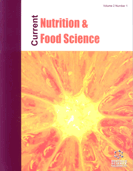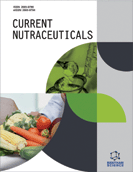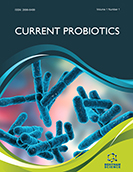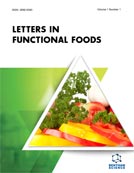Abstract
Diabetic retinopathy and age-related macular degeneration (AMD) are due to neovascularization as a result of increased production of growth hormone, insulin-like growth factor (IGF), basic fibroblast growth factor (bFGF), transforming growth factor-β (TGF-ß), hepatocyte growth factor, placental growth factor, tumor necrosis factor-α (TNF- α) and vascular endothelial growth factor (VEGF) in response to hypoxia and ischemia of the inner retinal layers. Beneficial effects of recombinant humanized anti-VEGF antibody and demonstration of enhanced levels of VEGF in the plasma and vitreal fluid in diabetic retinopathy and AMD suggests that VEGF plays a central role in pathological retinal angiogenesis. Retinopathy of prematurity initiated by hyperoxia-induced obliteration of newly formed blood vessels in the retina as a consequence of hyperoxia-induced shut-off of VEGF production by neuroglial cells leads to selective apoptosis of endothelial cells. This premature apoptosis of endothelial cells leads to hypoxia of the developing retina that, in turn, leads to the production of abnormally high levels of VEGF and hence, anti-VEGF therapy is useful in the treatment of retinopathy of prematurity. Thus, AMD, diabetic retinopathy, and retinopathy of prematurity are all characterized by high levels of VEGF and neovascularization. Recent studies revealed that increased consumption of ω-3 polyunsaturated fatty acids (PUFAs) prevent or arrest the progress of retinal neovascularization. ω-and ω-6 PUFAs and their products lipoxins, resolvins and protectins have anti-inflammatory actions, suppress VEGF and tumor necrosis factor-α (TNF-α) production, and inhibit endothelial cell proliferation that may account for their beneficial effects in pathological retinal angiogenesis. These results emphasize the role of lipids in diabetic retinopathy, AMD and retinopathy seen in premature infants.
Keywords: Angiogenesis, retinopathy, diabetes mellitus, age-related macular degeneration, inflammation, endothelial cells, vascular endothelial growth factor
Current Nutrition & Food Science
Title: Polyunsaturated Fatty Acids in Pathological Retinal Angiogenesis
Volume: 5 Issue: 2
Author(s): Undurti N. Das
Affiliation:
Keywords: Angiogenesis, retinopathy, diabetes mellitus, age-related macular degeneration, inflammation, endothelial cells, vascular endothelial growth factor
Abstract: Diabetic retinopathy and age-related macular degeneration (AMD) are due to neovascularization as a result of increased production of growth hormone, insulin-like growth factor (IGF), basic fibroblast growth factor (bFGF), transforming growth factor-β (TGF-ß), hepatocyte growth factor, placental growth factor, tumor necrosis factor-α (TNF- α) and vascular endothelial growth factor (VEGF) in response to hypoxia and ischemia of the inner retinal layers. Beneficial effects of recombinant humanized anti-VEGF antibody and demonstration of enhanced levels of VEGF in the plasma and vitreal fluid in diabetic retinopathy and AMD suggests that VEGF plays a central role in pathological retinal angiogenesis. Retinopathy of prematurity initiated by hyperoxia-induced obliteration of newly formed blood vessels in the retina as a consequence of hyperoxia-induced shut-off of VEGF production by neuroglial cells leads to selective apoptosis of endothelial cells. This premature apoptosis of endothelial cells leads to hypoxia of the developing retina that, in turn, leads to the production of abnormally high levels of VEGF and hence, anti-VEGF therapy is useful in the treatment of retinopathy of prematurity. Thus, AMD, diabetic retinopathy, and retinopathy of prematurity are all characterized by high levels of VEGF and neovascularization. Recent studies revealed that increased consumption of ω-3 polyunsaturated fatty acids (PUFAs) prevent or arrest the progress of retinal neovascularization. ω-and ω-6 PUFAs and their products lipoxins, resolvins and protectins have anti-inflammatory actions, suppress VEGF and tumor necrosis factor-α (TNF-α) production, and inhibit endothelial cell proliferation that may account for their beneficial effects in pathological retinal angiogenesis. These results emphasize the role of lipids in diabetic retinopathy, AMD and retinopathy seen in premature infants.
Export Options
About this article
Cite this article as:
Das N. Undurti, Polyunsaturated Fatty Acids in Pathological Retinal Angiogenesis, Current Nutrition & Food Science 2009; 5 (2) . https://dx.doi.org/10.2174/157340109788185562
| DOI https://dx.doi.org/10.2174/157340109788185562 |
Print ISSN 1573-4013 |
| Publisher Name Bentham Science Publisher |
Online ISSN 2212-3881 |
 13
13
- Author Guidelines
- Bentham Author Support Services (BASS)
- Graphical Abstracts
- Fabricating and Stating False Information
- Research Misconduct
- Post Publication Discussions and Corrections
- Publishing Ethics and Rectitude
- Increase Visibility of Your Article
- Archiving Policies
- Peer Review Workflow
- Order Your Article Before Print
- Promote Your Article
- Manuscript Transfer Facility
- Editorial Policies
- Allegations from Whistleblowers
- Announcements
Related Articles
-
Inflammatory Mechanisms and Redox Status in Periodontal and Cardiometabolic Diseases: Effects of Adjunctive Nutritional Antioxidants and Statins
Infectious Disorders - Drug Targets Systematic Review of the Role of Microparticles in Systemic Sclerosis
Current Rheumatology Reviews Metabolic Profiling in Disease Diagnosis, Toxicology and Personalized Healthcare
Current Pharmaceutical Biotechnology Effect of Low (5 mg) vs. High (20-40 mg) Rosuvastatin Dose on 24h Arterial Stiffness, Central Haemodynamics, and Non-Alcoholic Fatty Liver Disease in Patients with Optimally Controlled Arterial Hypertension
Current Vascular Pharmacology Older Adults Prescribed Methadone: A Review of the Literature Across the Life Span from Opiate Initiation to Methadone Maintenance Treatment
Current Drug Abuse Reviews Improvement of Bioactive Potential of Canavalia Beans of Coastal Sand Dunes by Solid-Substrate Fermentation Using Rhizopus oligosporus
Current Nutrition & Food Science Diamidine Activity Against Trypanosomes: The State of the Art
Current Molecular Pharmacology Glucose-6-Phosphate Dehydrogenase Deficiency: Disadvantages and Possible Benefits
Cardiovascular & Hematological Disorders-Drug Targets Inhibition of Interleukin-1 in the Treatment of Selected Cardiovascular Complications
Current Reviews in Clinical and Experimental Pharmacology Targeting Mitochondrial Dysfunction in Chronic Heart Failure: Current Evidence and Potential Approaches
Current Pharmaceutical Design Deciphering Role of Cytokines for Therapeutic Strategies Against Rheumatoid Arthritis
Current Drug Targets The Contribution of Transcriptomics to Biomarker Development in Systemic Vasculitis and SLE
Current Pharmaceutical Design Thioridazine: The Good and the Bad
Recent Patents on Anti-Infective Drug Discovery Inflammaging and Proteases in Abdominal Aortic Aneurysm
Current Vascular Pharmacology Plausible Improvements for Selective Targeting of Dopamine Receptors in Therapy of Parkinson’s Disease
Mini-Reviews in Medicinal Chemistry Phenotypes and Enviromental Factors: Their Influence in PCOS
Current Pharmaceutical Design Relationship Between Inflammation, Insulin Resistance and Type 2 Diabetes: Cause or Effect?
Current Diabetes Reviews Evolutionary Advantage and Molecular Modes of Action of Multi-Component Mixtures Used in Phytomedicine
Current Drug Metabolism Circulating Biomarkers for the Diagnosis and Prognosis of Heart Failure
Current Medicinal Chemistry The Effect of Acute Hypoxia on Excitability in the Heart and the L-Type Calcium Channel as a Therapeutic Target
Current Drug Discovery Technologies





















